9 Easy Tips for Feeding Birds in Summer
Updated: Apr. 20, 2022
Bird experts Kenn and Kimberly Kaufman make feeding birds in summer incredibly easy with achievable backyard hints and tricks.
Our editors and experts handpick every product we feature. We may earn a commission from your purchases.
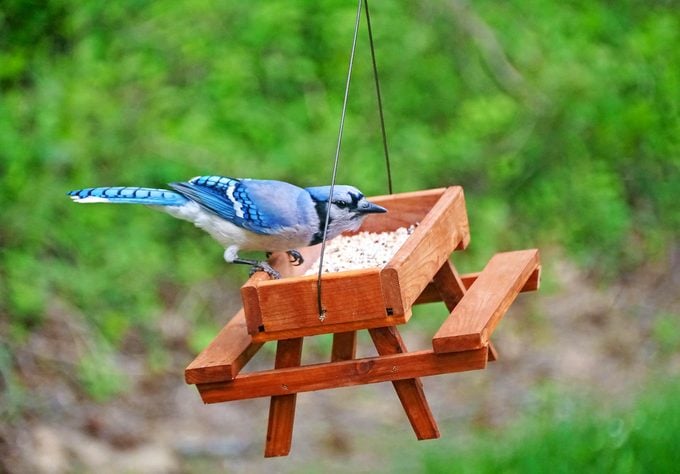
Expert Advice for Feeding Birds in Summer
Feeding birds in summer is a joy. Gardens are alive with colorful blooms and buzzing bugs, and your favorite migratory songbirds have returned from their wintering grounds. Natural food for birds is abundant, so many people opt to save a little time and money by taking their feeders down for the season. But definite advantages abound for those who keep birds top of mind and keep their feeders filled this time of year.
1. Put Out Feeders for Baby Birds (and Their Parents!)
Adult birds are busy raising young during the summer, and feeders provide an easy food source for hardworking parents. After youngsters leave the nest, many adults introduce their offspring to feeders. Woodpeckers bring their fledglings and show them how to feed on suet cakes or peanuts. Young orioles develop foraging skills by learning to cling to the side of a feeder. Even if there were no other reasons, it would be worth the effort to feed birds all summer just to watch the young ones. You’ll never tire of watching baby birds learn how to navigate their newly discovered world.
Don’t miss these pictures of super cute baby birds!
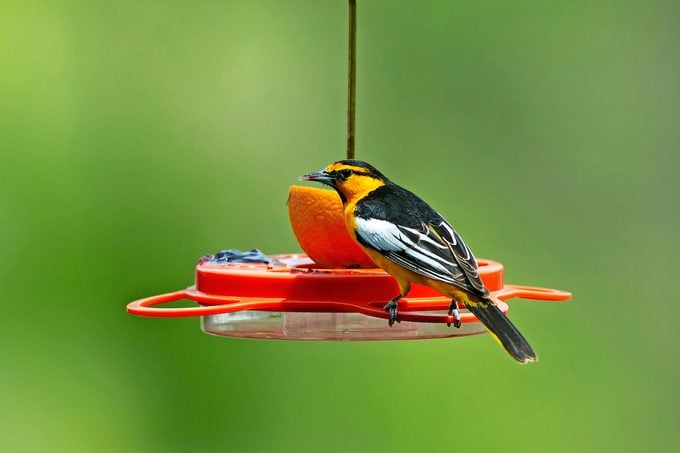
2. Serve Fresh Fruit
Orioles are favorite summer fliers because they bring a blast of color to any garden. The bright orange birds rely on nectar and insects as natural food sources. The best and safest way to attract them is to offer natural fruit. Slice an orange in half and impale it on a branch. Or offer grapes in bunches to keep birds at your feeder longer—they pick at the fruit rather than carrying it off. Fresh fruit also attracts robins, catbirds and mockingbirds.
3. Put Out Grape Jelly
Serve grape jelly in a simple open dish near other feeders. Once birds discover the sweet treat, they’re likely to become faithful visitors. But offer just small amounts at a time so that jelly won’t become too high a percentage of a bird’s daily diet. If you provide just a little bit each day, your feeder birds in summer will still get most of their nutrition from insects and other natural foods.
4. Offer Suet Substitutes
Suet is a winter standard for attracting woodpeckers, nuthatches, chickadees and titmice, among others. In hot weather, however, it melts quickly, becoming sticky and then rancid. Many wild bird feeding stores offer no-melt suet cakes formulated with special ingredients to keep them solid at higher temperatures. Even with these cakes of no-melt suet, it’s still a good idea to place the feeder where it will be in the shade during the hottest hours of the day.
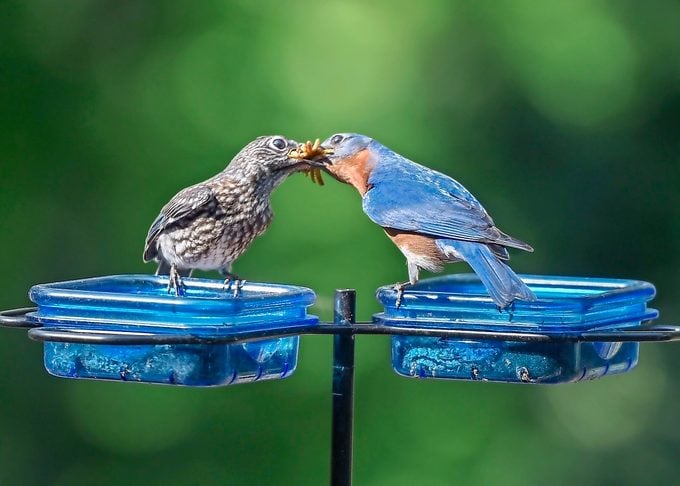
5. Supply Mealworms
Mealworms are a treat for feeding birds in summer, but offering live ones can be tricky because they’re always trying to escape. A plastic dish with slick, straight sides will slow them down long enough for the birds to gobble them up. Bluebirds find live mealworms irresistible, and if they nest nearby, they’ll bring their lovely fledglings to feast on them as well. It’s important to offer live mealworms in moderation. An endless supply might lead bluebirds to skip other foods, and they could wind up with nutritional deficiencies.
We found the best bluebird feeders and feeding tips.
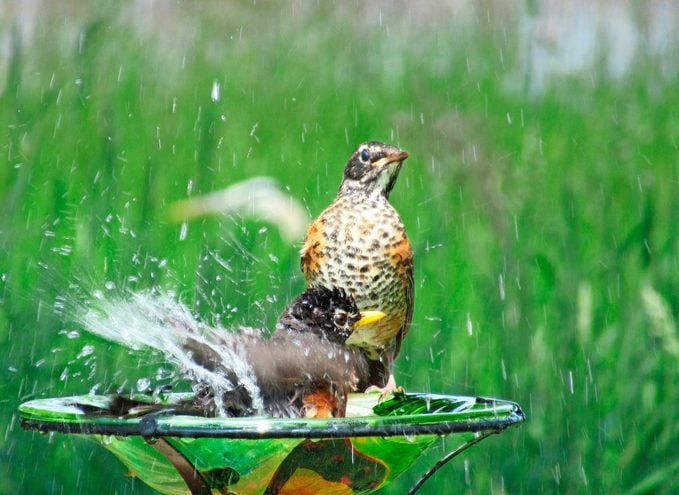
6. Add a Fresh Water Source
A fresh water source is important for all songbirds—and a simple bath filled with fresh water does the trick. But the sound of moving water makes it more likely to attract new visitors. Keep the water moving by adding a dripper or a small fountain. Or try a new approach: an item called a Water Wiggler. This solar-powered device keeps the water slightly agitated, sending ripples across the surface. If birds aren’t using your water feature, the basin may be too deep. A simple solution is to add decorative pea gravel or flat rocks to the bottom. Summer heat hastens the growth of algae, so it’s important to clean a birdbath regularly. Use a stiff brush to scrub the basin thoroughly, rinse well and refill.
Check out our favorite birdbaths and fountains to attract more birds.
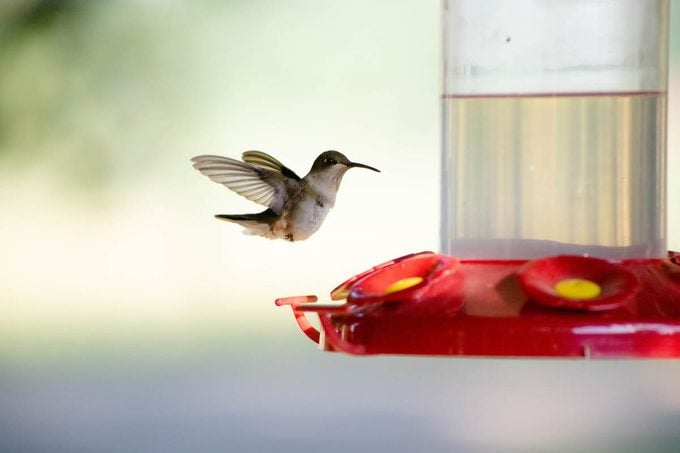
7. Hang a Sugar-Water Feeder
No station for feeding birds in summer would be complete without a hummingbird feeder. We suggest mixing your own sugar water using a ratio of 4 parts water to 1 part sugar. Skip the red dye; it’s unnecessary and may cause harm to the birds. Extra mixture can be stored in the refrigerator for a week or so. Hummingbirds aren’t the only creatures with a hankering for the sweet stuff—ants, bees and wasps are also attracted. To keep ants away, use an ant moat, a shallow dish filled with water that attaches above the feeder. Ants crawling down the wire or other hanger reach the edge of the water and then can’t get across. To discourage bees and wasps, use the style of feeder shaped like a saucer with the nectar ports on top. The short tongues of the insects can’t reach to the level of the sugar water below.
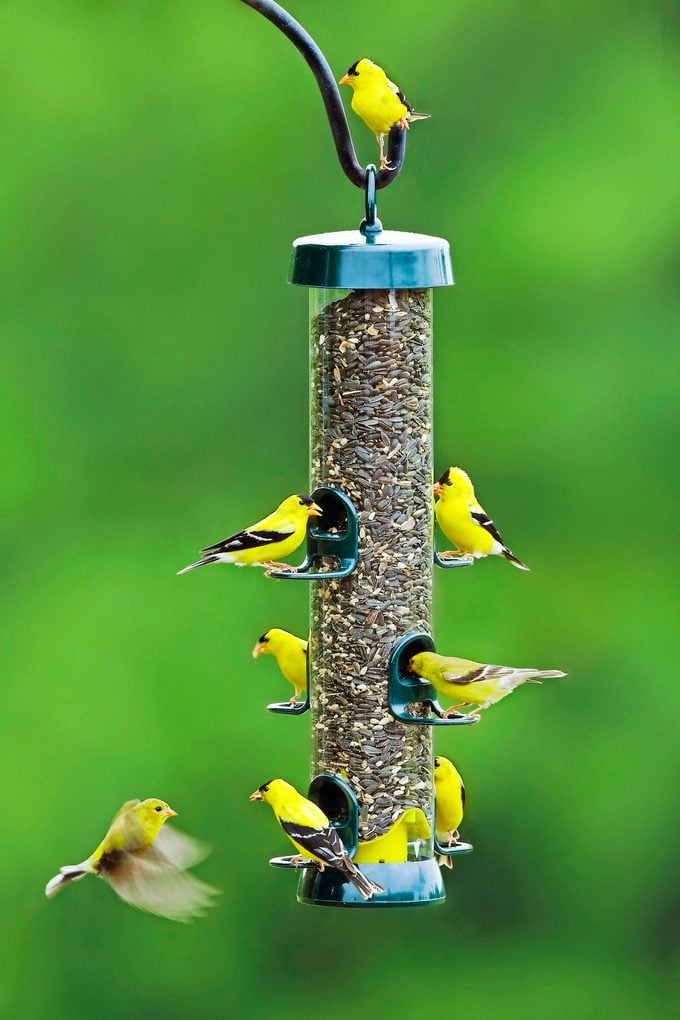
8. Switch Your Seed to Thistle
Thistle seed (also called Nyjer seed) is one of the more reliable types of bird food during all seasons. It’s very popular with finches, and by feeding it to birds in summer, you can attract flocks of American goldfinches in their brilliant yellow plumage. Indigo buntings and lazuli buntings also love thistle seed and slip in quietly from nearby thickets to sample it. In addition to thistle, it’s a good idea to offer black oil sunflower seeds all summer for the cardinals and grosbeaks, and white proso millet for other seed eaters.
Psst—these are the best finch feeders to serve thistle seed.
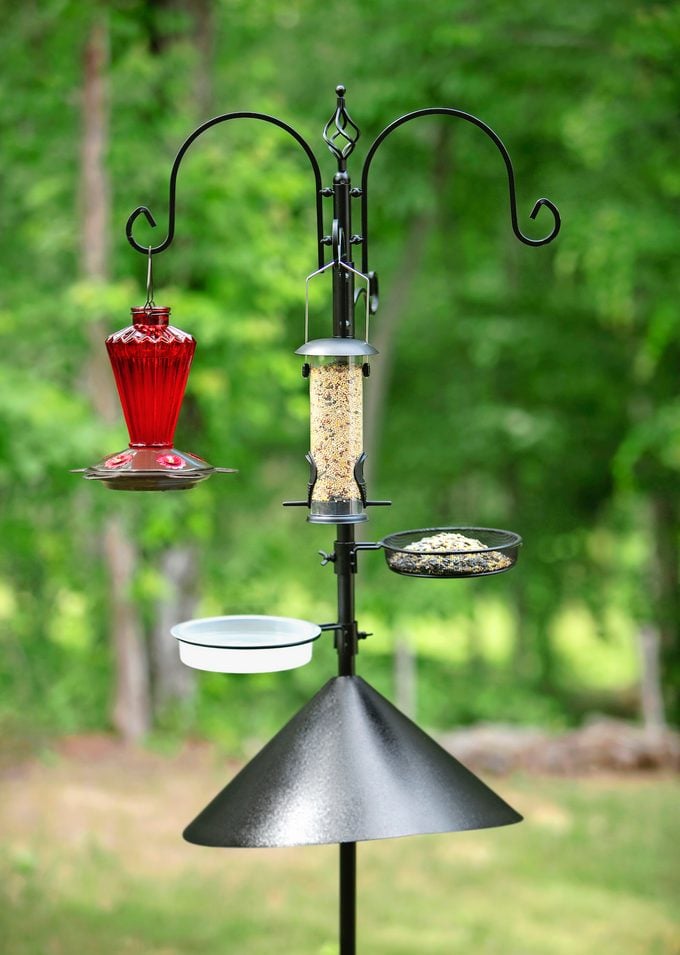
9. Thwart Pests with Baffles
Many other creatures wander around in summer, so it becomes even more important to use baffles to keep them off feeders. Squirrels are pesky enough, but animals the size of raccoons can wreck a feeder in one night. A wild bird specialty store can help you figure out what style of baffle to use on the poles that support your feeders. If nocturnal visitors continue to raid your feeders, it might be necessary to bring them indoors overnight.
Here’s the best squirrel-proof bird feeders and 12 tips that work.




















